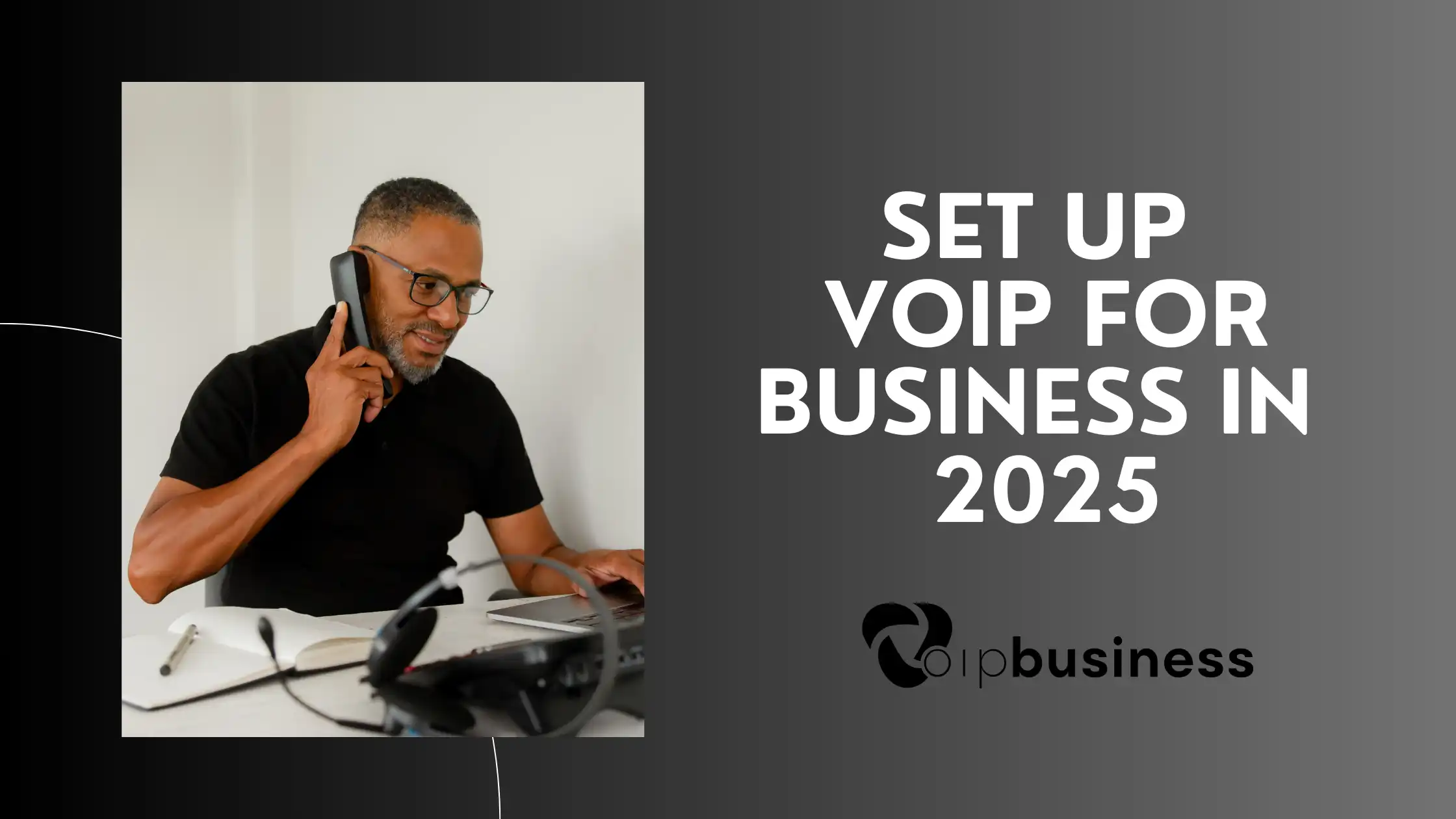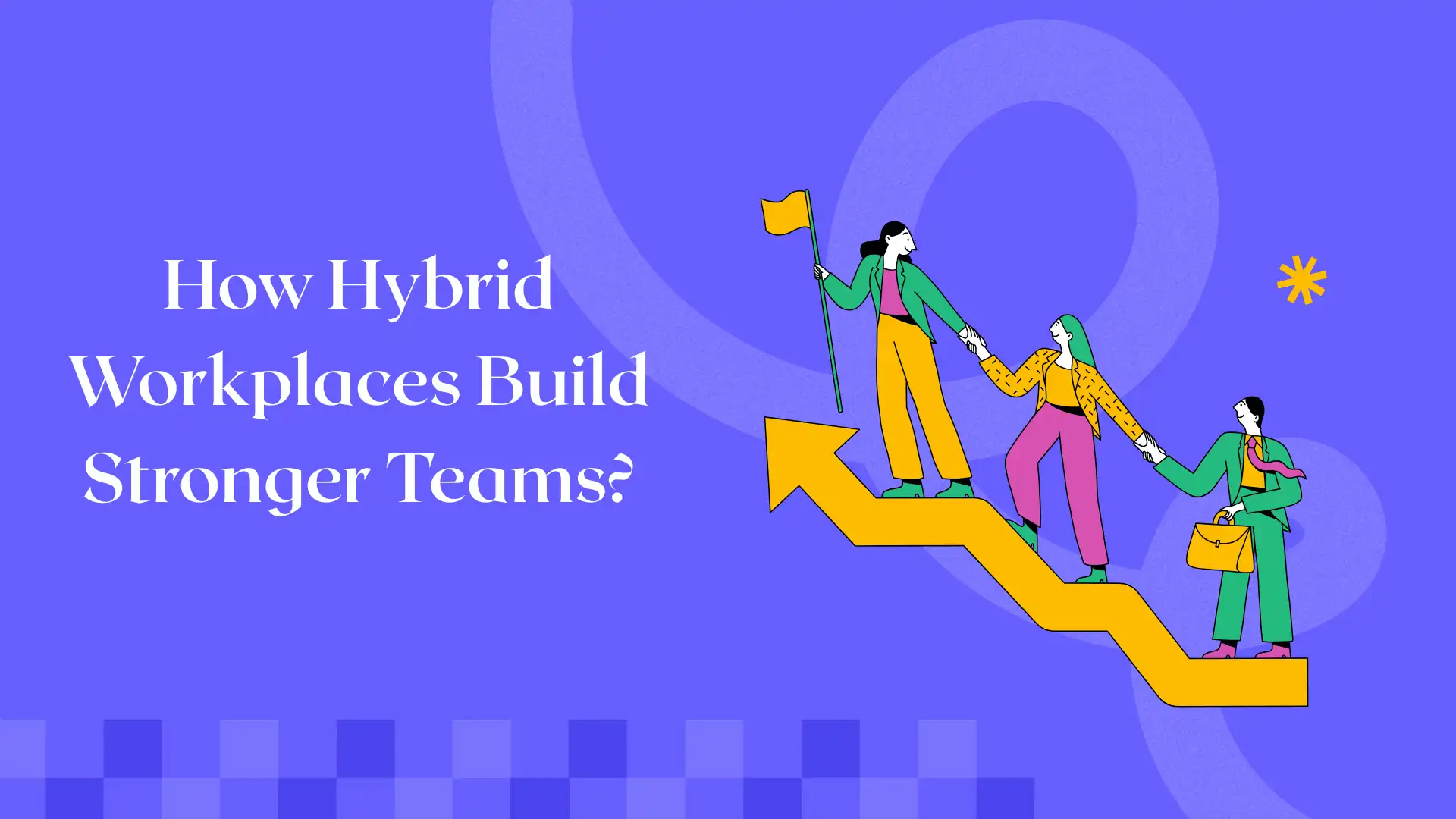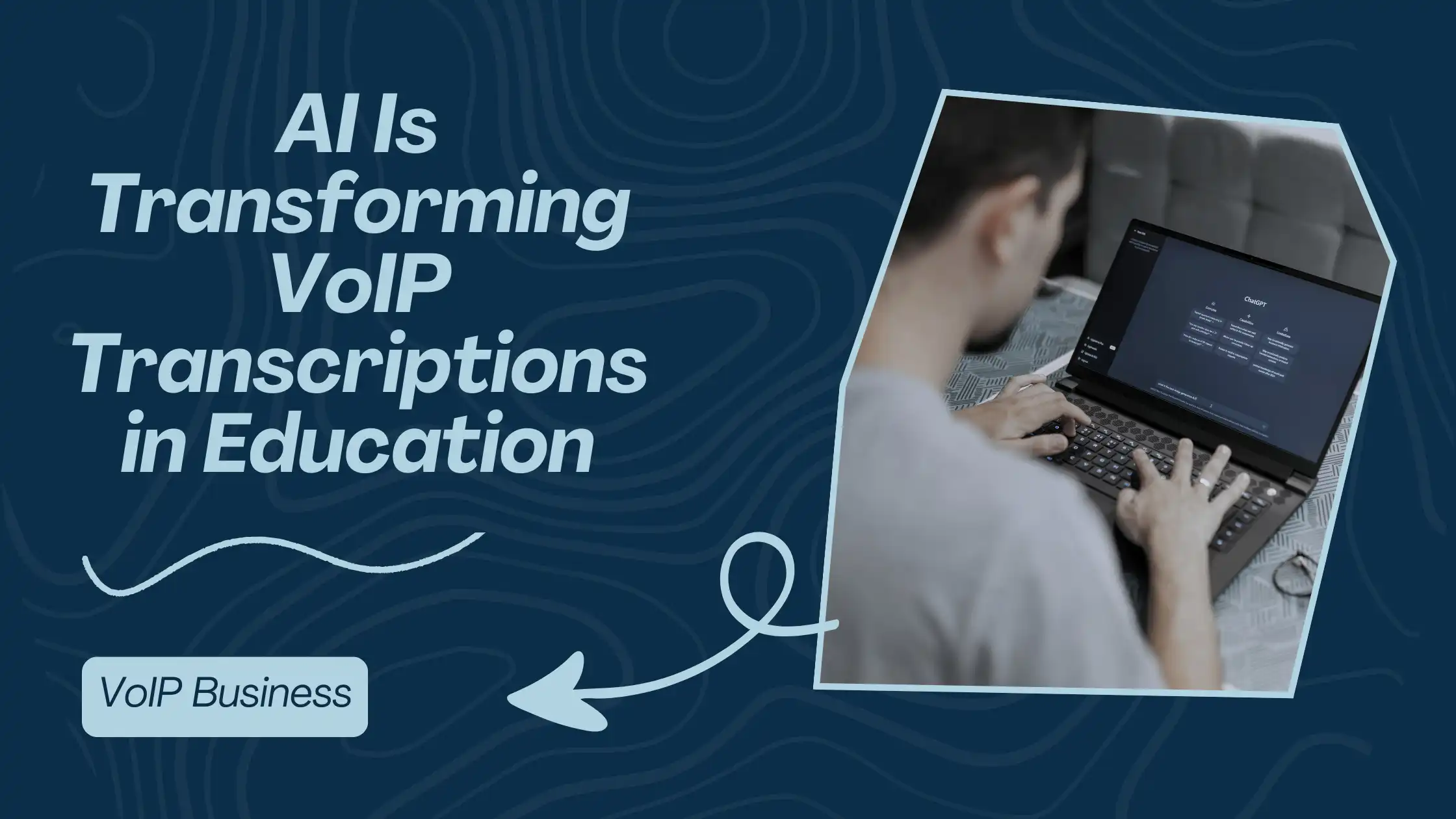
How To Set Up VoIP For Business in 2025
Over time, more and more businesses are shifting to Voice over Internet Protocol (VoIP) from the traditional landline system. Advanced calling features and reduced calling costs attract businesses, but some are still confused about making this switch. They think VoIP phone systems need expensive hardware or the setup is challenging or time-consuming. But if you choose the right VoIP provider and follow all the necessary steps, you can enjoy a seamless transition to VoIP. If you want to shift to VoIP but are confused about the setup process, do not worry. We will answer all your questions in this article. If you are trying to upgrade your business phone system without spending a ton, you are in the right spot. This guide walks you through setting up a VoIP system that is budget-friendly and actually works the way you need it to. What Makes VoIP Different From Traditional Phone Systems? Before jumping into setup, let’s get clear on what makes VoIP different. Traditional phones plug into a wall jack and connect to the Public Switched Telephone Network (PSTN). That is the same copper-wire system that has been around forever. Your calls travel through physical lines, managed by local phone companies. It’s basic, and it works but it can be pricey, especially for businesses. VoIP, on the other hand, does not use those landline cables. It sends calls through the internet instead. That one shift changes a lot how much you pay, what features you get, and how flexible your system can be. On the other hand, Internet telephony or IP phones use an internet connection and connect to a telephone network through a VoIP provider. It converts voice signals into digital packets and transmits them using Internet Protocol. The data center of your network provider converts these signals into an analog and transfers them through the PSTN. Since cloud-based phone systems do not need dedicated lines, it makes it easier for you to scale your communication according to the needs of your business. In contrast, you need an on-premises Private Branch Exchange (PBX) to share phone service with multiple employees. Before you sign up for anything, pause and think about what your business actually uses the phone for. i. Assess Your Business Needs Do you make a lot of calls every day? Are most of them local, long-distance, or international? Do you need voicemail, call forwarding, or video calls? And of course what’s your budget like? Take a good look at your current phone setup, how many people will need access, and how often you’re on the phone. This helps you pick a plan that’s not too much and not too little just right for your day-to-day. ii. Test Your Internet Connection This part’s important—VoIP runs on the internet, so your connection needs to be solid. For each phone line, you’ll need about 100 Kbps for both upload and download. That’s not a lot, and most business internet plans can handle it easily. But if you’re using a basic home plan—especially DSL—you might hit some bumps. The big deal here is not just speed. It’s stable. If your internet drops often or gets slow during busy hours, your calls might get choppy or even cut out. Stuff like jitter and packet loss can really mess up a call. To avoid that, try these tips: Use a wired connection instead of Wi-Fi whenever you can. Wi-Fi works, but it is more likely to glitch especially if someone is reheating lunch in the microwave. Check your router. Old routers can not keep up with modern traffic, especially if you have got a lot of people or devices online. Run a VoIP speed test. It will tell you if your connection is good enough and highlight any issues before they become a problem. iii. Buy The Right VoIP Hardware Here is one extra step that makes a big difference: turn on Quality of Service (QoS) in your router settings. This feature tells your network to treat phone calls as more important than other stuff like someone streaming cat videos or watching Netflix. It keeps your voice data smooth and steady, even when the rest of the internet’s getting hammered. Just check your router’s manual or dashboard to enable it. It’s usually pretty simple. How Can You Save Money On VoIP Hardware? You can use your existing phone system with VoIP. You will need an Analogue Telephone Adapter (ATA), which functions between your network and phones and digitalizes the analog signals. So you do not need to spend money on buying new equipment and training staff. Another simple way to cut down on VoIP hardware costs? Skip the desk phones. Instead, use a softphone or a business phone app. These apps work right on your smartphone or computer, letting you make and receive calls from pretty much anywhere. It is a smart move especially for remote teams or anyone on the go. 4. Choose The Right VoIP Provider Switching to VoIP isn’t just about ditching your old landline. It’s a chance to upgrade how your business communicates—without blowing your budget. Back in late 2019, we asked over 1,000 professionals how they handled business communication. That research helped shape our 2020 State of Business Communication Report, a deep dive into how companies were adapting and what they really needed from their phone systems. This research revealed that over one in three companies had experienced customer losses due to internal communication errors. Picking the right VoIP provider can fix a lot of communication headaches. The right setup helps your team stay connected, no matter where they are. It also gives you tools that make teamwork smoother like phone calls, chat, video, and even CRM integration. Before you commit to anything, make sure the provider offers what your business actually needs. 5. Feature To Look For In A VoIP Provider Every provider is a bit different, but here are the must-haves to keep an eye on: i. Call Management Features A solid VoIP system should make call handling simple. Look for features like: Call forwarding Call queues Call routing Speed dial Call recording Call transfer Three-way calling These tools help your team stay on top of every call, no dropped balls, no confusion. ii. Unified Communication Your phone system should be more than just a phone. A good provider gives you: Team chat SMS messaging Voice calls Video meetings This way, your team can work together in real time without switching between apps all day. iii. Third-Party Integrations Your VoIP system should fit into your workflow, not fight against it. If you use a CRM or other tools, make sure your provider supports them. The less switching around, the better. Security Data safety matters especially when calls carry sensitive info. Choose a provider that offers: Encryption (both during and after the call) Two-factor login or biometric access Peace of mind is part of the package. Mobile app A mobile app is a game-changer—especially for remote teams or anyone working on the go. With the app, your team can: Make and receive calls Check voicemail Join video calls Basically, they get the same tools as the office phone right from their pocket. 6. Get Your Business Phone Number Most VoIP services let you pick a local number, which is great for businesses that want to build trust in a certain area. You can also choose: Toll-free numbers (like 800, 888, etc.) Vanity numbers (e.g., 1-800-FLOWERS) Already have a number you love? Ask your provider about number porting. Just give them your current number and some details, and they’ll handle the switch. Heads-up: Some services, like Google Voice, charge a small fee (usually around $20) to port a number in. If your current carrier has good rates, you can also go with Bring Your Own Carrier (BYOC). It lets you keep your existing provider while still using a new VoIP platform. This is super helpful if you’re expanding and want to add carriers for different locations. 7. Setup Your VoIP Phone System How you install your VoIP system depends on the type you choose. Here’s a quick rundown: Device-Based VoIP Systems: This setup is super simple. You either: Plug your regular phones into an adapter connected to your modem, or Use special IP phones that connect straight to the internet via Wi-Fi No need to get fancy unless you want to. On-Premise VoIP: This one’s a bit more hands-on. It needs a pro team to get it running. Here’s what happens: A group of techs installs your PBX (that’s your private phone system) on-site They make sure everything connects properly and works with your network It is more work upfront but gives you full control. Software-Based or Cloud-Based VoIP: For software-based or cloud-based VoIP solutions, the installation is typically straightforward. You must download the VoIP provider’s application onto your digital devices, including desktop computers and mobile devices. 8. Test Your Newly Setup VoIP System After installation, you must test your VoIP phone system to ensure everything runs smoothly. Make test calls and pay attention to the following things: Check audio quality and notice if there are signs of low-quality audio. If there are signs of significant delays between you saying something and the receiver hearing it. If it happens, it means there are latency issues. Also, check your connection stability so there are no call-drop issues. It is better to try testing your lines when there is a lot of network activity. This network congestion can result in different line issues, from choppy audio to dropped calls. Final Words – Set Up VoIP For Business VoIP is an advanced phone system offering numerous features and benefits. That is why more and more businesses are shifting to VoIP. Businesses need to know all the essential steps of VoIP setup to experience a smooth transition. We have described these steps in this article to help you set up VoIP phones efficiently. Before switching to VoIP, it helps to follow a few key steps. Start by figuring out what your business really needs. Test your internet connection since VoIP runs on it, a weak connection can mess things up. Then decide if you will need any hardware like headsets or IP phones. Some folks just use apps. Pick a VoIP provider that matches your needs. Choose a business number. Follow their setup steps. Test everything before you go live. Do it right the first time, and you will save yourself a lot of stress later. Less time fixing phone issues means more time focusing on your actual work. FAQs – Set Up VoIP For Business 1. What is VoIP and how does it work? VoIP stands for Voice over Internet Protocol. It lets you make calls using the internet instead of regular phone lines. It is a cheaper, smarter way to stay in touch especially for businesses. 2. Do I need special equipment? Not always. You can use your old phones with a small adapter (called an ATA). Or get VoIP phones made for internet calls. Don’t want to buy equipment? Use a softphone app on your computer or phone. 3. How fast does my internet need to be? You’ll need about 100 Kbps up and down per phone line. But do not just chase speed—go for a stable, reliable connection. That’s what makes calls clear. 4. Can I keep my current number? Yep. Most VoIP services let you “port” your number over. So you won’t lose contact with your customers. 5. Can I make international calls with VoIP? Definitely. In fact, VoIP often gives you way lower rates than traditional phone services. 6. Is VoIP safe for business use? It can be safe as long as your provider offers proper security. Look for features like call encryption and two-factor login. It keeps your chats and info locked down. 7. Why should I switch to VoIP for my business? It saves money. It gives you smart tools like voicemail-to-email and call recording. It grows with your team. And best of all, it works from anywhere. Office, home, even a coffee shop. 8. What problems could come up? A few things might trip you up like bad internet, setup issues, or getting your team used to the new system. But with the right support, you will get through it just fine. Read More : History of VoIP and Internet Telephony: From The 1920s To Present Day








